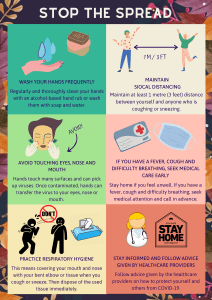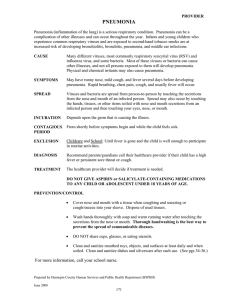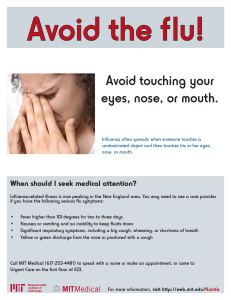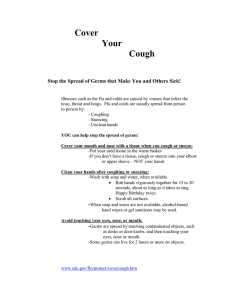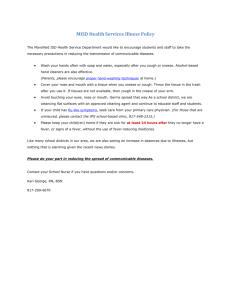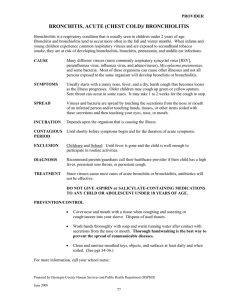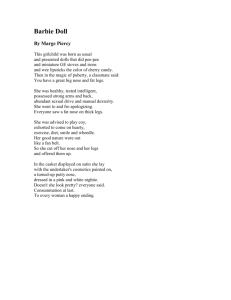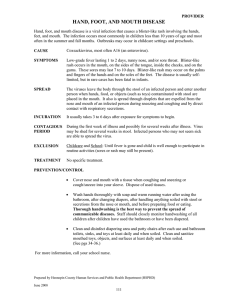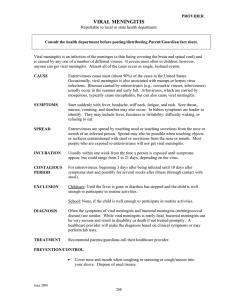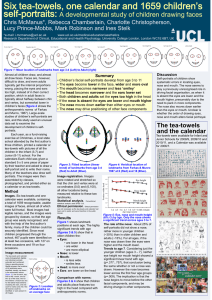RESPIRATORY INFECTION (VIRAL)
advertisement
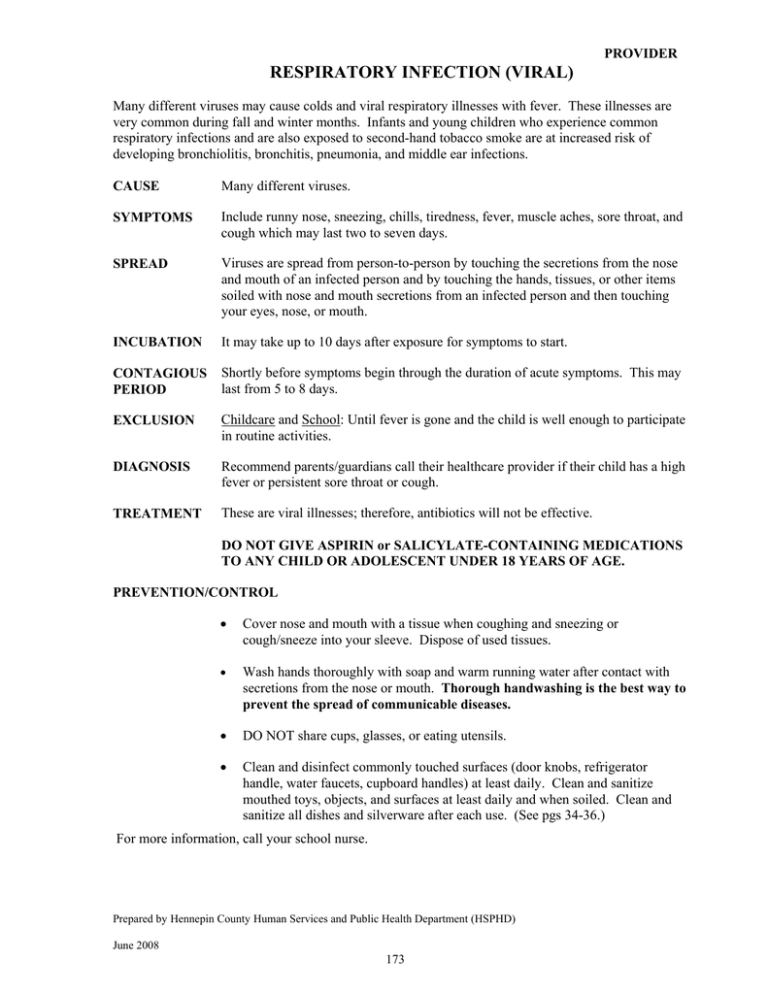
PROVIDER RESPIRATORY INFECTION (VIRAL) Many different viruses may cause colds and viral respiratory illnesses with fever. These illnesses are very common during fall and winter months. Infants and young children who experience common respiratory infections and are also exposed to second-hand tobacco smoke are at increased risk of developing bronchiolitis, bronchitis, pneumonia, and middle ear infections. CAUSE Many different viruses. SYMPTOMS Include runny nose, sneezing, chills, tiredness, fever, muscle aches, sore throat, and cough which may last two to seven days. SPREAD Viruses are spread from person-to-person by touching the secretions from the nose and mouth of an infected person and by touching the hands, tissues, or other items soiled with nose and mouth secretions from an infected person and then touching your eyes, nose, or mouth. INCUBATION It may take up to 10 days after exposure for symptoms to start. CONTAGIOUS PERIOD Shortly before symptoms begin through the duration of acute symptoms. This may last from 5 to 8 days. EXCLUSION Childcare and School: Until fever is gone and the child is well enough to participate in routine activities. DIAGNOSIS Recommend parents/guardians call their healthcare provider if their child has a high fever or persistent sore throat or cough. TREATMENT These are viral illnesses; therefore, antibiotics will not be effective. DO NOT GIVE ASPIRIN or SALICYLATE-CONTAINING MEDICATIONS TO ANY CHILD OR ADOLESCENT UNDER 18 YEARS OF AGE. PREVENTION/CONTROL • Cover nose and mouth with a tissue when coughing and sneezing or cough/sneeze into your sleeve. Dispose of used tissues. • Wash hands thoroughly with soap and warm running water after contact with secretions from the nose or mouth. Thorough handwashing is the best way to prevent the spread of communicable diseases. • DO NOT share cups, glasses, or eating utensils. • Clean and disinfect commonly touched surfaces (door knobs, refrigerator handle, water faucets, cupboard handles) at least daily. Clean and sanitize mouthed toys, objects, and surfaces at least daily and when soiled. Clean and sanitize all dishes and silverware after each use. (See pgs 34-36.) For more information, call your school nurse. Prepared by Hennepin County Human Services and Public Health Department (HSPHD) June 2008 173
